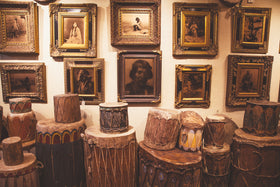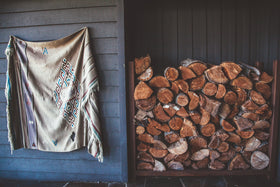Where did you get all of these things?
The Cisco’s Collection has been built and curated over 25 years by Sam Kennedy, owner of Cisco’s Gallery. During his years on the road traveling the country, he developed a vastly extensive network of contacts and collectors. Today, some pieces walk in the front door from the surrounding North Idaho area, but many of his best pieces come still come from those early contacts. With a solid reputation for fairness and integrity, many prospective sellers seek out Cisco’s to handle their collection or estate.
How can you be sure your pieces are genuine?
With numerous reproductions and knock-off novelty items in the market, it is important that each piece be carefully examined to ensure that it is authentic and genuine. Our in-house experts have an eye for detail and experience discerning between authentic items and reproductions. This expertise includes knowledge of traditional construction methods and how materials deteriorate and gain patina with age. If an object is in question, we often consult with our network of specialists which focus on particular subject areas. As a customer of Cisco’s, you can be sure that we work hard to ensure items are as represented and have an outlined process if there is disagreement.
How do you put a price on such one-of-a-kind pieces?
Our prices are based on a global market. While each piece is unique and one-of-a-kind, we carefully study auction results from across the world and have extensive experience pricing “priceless” items. While values differ among regional markets, we take a global approach to our pricing. Our inventory typically represents the best there is to offer in any category and we price accordingly – fair, yet competitive.
How did the Native Americans make beads?
Probably the most frequently asked question by our visitors is “How did the Indians make beads?” While Native Americans did traditionally make beads from shell, stone, bone, and even metal, the fact is, that took an exhaustive amount of time using stone hand tools. Brightly colored glass beads were one of the most desirable early trade items and were very quickly adopted and spread throughout early America as early as the 15th century.




